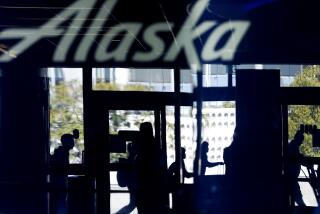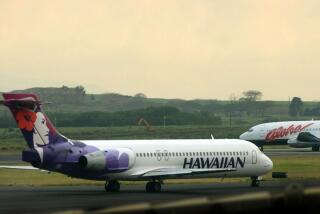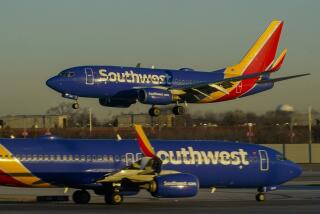Growth of Persian Gulf airlines poses threat to U.S. carriers

Emirates passenger jets taxi on the tarmac at Dubai International airport in Dubai, United Arab Emirates. Three U.S. carriers and flight attendants, pilots and other workers say Middle Eastern airlines have an unfair competitive advantage.
The nation’s three largest airlines and their labor unions are usually fierce business rivals. But in the last few months, these often-warring groups have joined forces against three Persian Gulf carriers, Etihad, Emirates and Qatar Airways.
American, United and Delta Air Lines, along with pilots, flight attendants and airline workers, charge that the three Persian Gulf carriers are competing unfairly against U.S. carriers by accepting huge subsidies from their oil-rich government owners.
A new analysis says the U.S. carriers and their union are ganging up on the Persian Gulf carriers because they feel threatened by the pace of growth of the foreign airlines in serving the lucrative international travel market.
U.S. airlines still control the biggest share of international travel — about 53% — but that share has fallen by 4% over the last five years while Middle Eastern carriers have tripled their seating capacity since 1996, according to a report from OAG Aviation Worldwide, a British aviation data and analysis provider.
The growth was highlighted two years ago when Emirates made the single largest aircraft order in U.S. commercial aviation history — $76 billion in aircraft from Boeing Co.
“There has been exponential growth provided by Middle East carriers,” said John Grant, executive vice president of OAG.
The analysis goes on to point out that U.S. carriers may have more than one foreign competitor to worry about: In the last five years, Chinese carriers have increased total seat capacity by 140%.
“The U.S. still has the largest civil aviation market in the world and will for the next seven or eight years,” Grant added. “But the gap between the U.S. and Chinese airlines is shrinking.”
To read more about travel, tourism and the airline industry, follow me on Twitter at @hugomartin.







